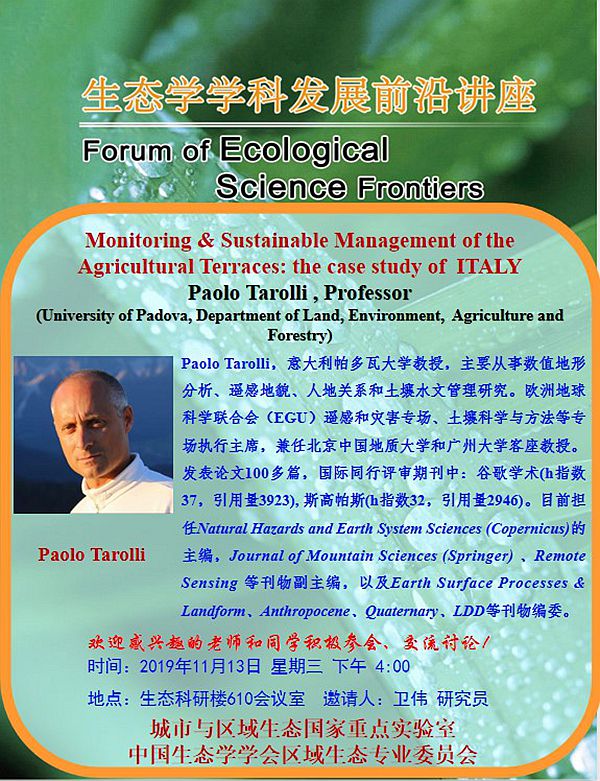Abstract: Among the most evident landscape signatures of the human fingerprint, the terraces related to agricultural activities are of great importance. This technique is widely used in various parts of the world under various environmental conditions. In some areas, terraced landscapes can be considered a historical heritage and a cultural service to be adequately preserved (e.g. FAO-GIAHS or UNESCO sites). However, in some areas such landscapes are under threat. Climate change first (with the increasing of rainfall intensity) but also not optimal maintenance or abandonment can progressively increase land degradation, and more in specific gully erosion and landslides. It is therefore necessary to develop new technologies and management approaches, environmentally and economically sustainable, to reduce soil erosion and improve soil in steep-slope landscapes where hydro-geological risk is high. The purpose of this talk is to present the case study of Italy, focusing on vineyards. Some solutions to monitor (e.g. use of drones), analyze and prevent hydrogeological instabilities are tested in different areas of North Italy, including a GIAHS terraced landscape site (SOAVE GIAHS site) located in Veneto Region (Italy). The goal is to enhance environmental sustainability of vineyard agroecosystems in hilly and mountain landscapes, with special focus on the reduction of soil erosion risk, minimize the impact of cultivation practices, introduce conservation techniques and finally develop an integrated management approach to combine production targets of farmers with preservation of environment and landscape.

